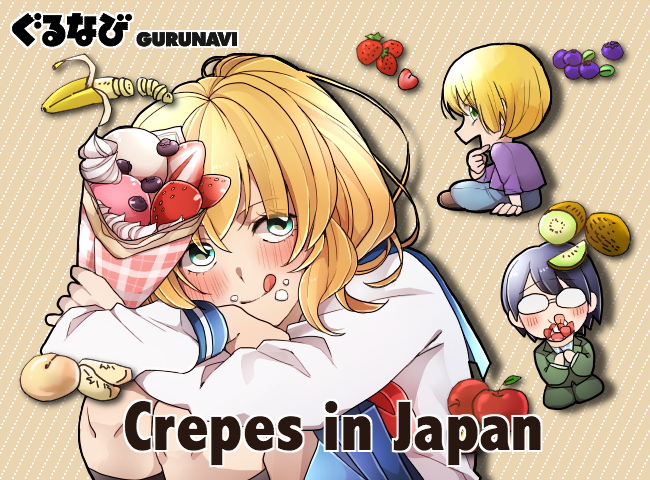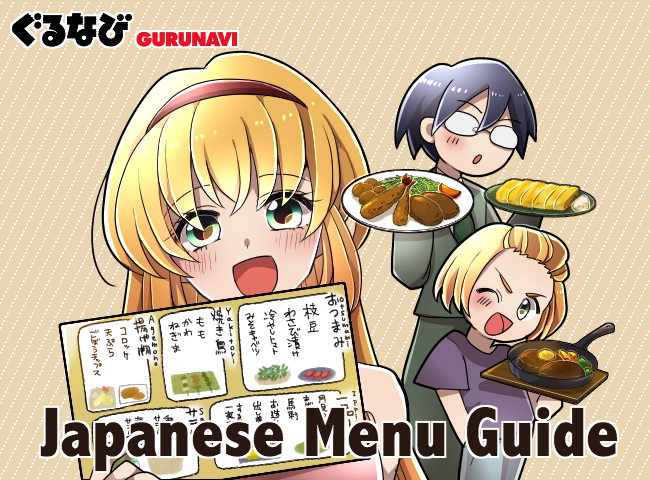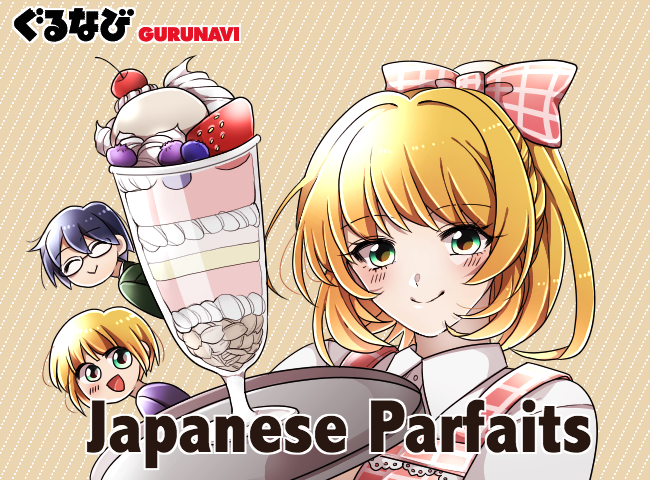Different Types of Senbei (Japanese Crackers)
Senbei are traditional Japanese crackers that have been enjoyed for centuries. The crackers were first introduced to Japan via China during the Tang Dynasty, but these early senbei were made from potato and had a cake-like texture. Modern Japanese senbei made from toasted rice were created during the Edo period, when the salty soy sauce variety of Japanese rice crackers became particularly popular.
In the eastern Kanto region, senbei are made from non-glutinous rice flour mixed into a dough and formed into flat discs that are baked or roasted over a flame. However, senbei made from glutinous rice can be found in the western Kansai region. Senbei are sold everywhere from supermarkets and department stores to yatai (street food stands) at outdoor festivals. Specialty senbei artisan makers also still exist, especially in older neighborhoods and districts.
Read on to learn all about senbei and the different kinds of toasted Japanese crackers available throughout the country.
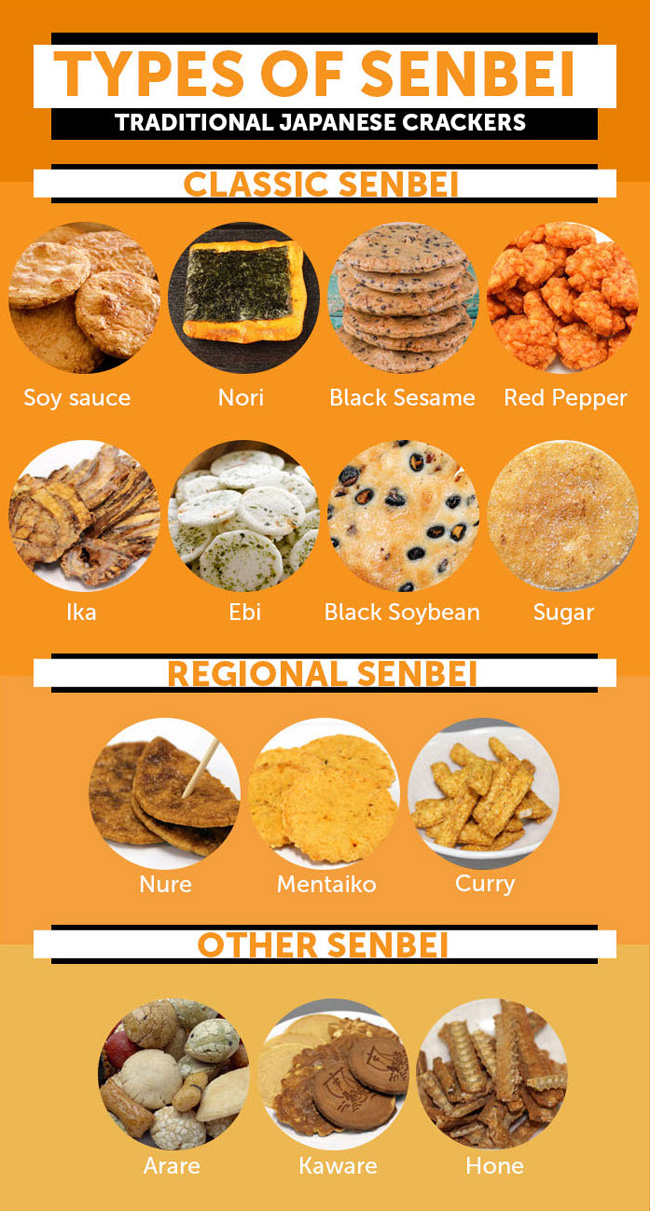
Snack Attack: The Diverse Flavors of Japanese Crackers
Classic Senbei Flavors
Shoyu (Soy Sauce) Senbei

Soy sauce-flavored senbei are the most common flavor found in Japan. These senbei are made by brushing or dipping the rice crackers in soy sauce as they’re toasted over a flame, giving them a wonderful aroma and deeply savory flavor.
Seaweed (Nori) Senbei

Nori-flavored senbei are made by wrapping toasted rice crackers in a thin sheet of dried nori seaweed. These can also be made by mixing small shredded pieces of nori or aonori (powdered seaweed) into the senbei dough before baking.
Kuro Goma (Black Sesame) Senbei

While senbei are typically made with a dough of rice flour, black sesame senbei are made with a dough of flour and sesame seeds instead. The result is a deliciously nutty senbei cracker with an attractively speckled surface.
Togarashi (Red Chili Pepper) Senbei
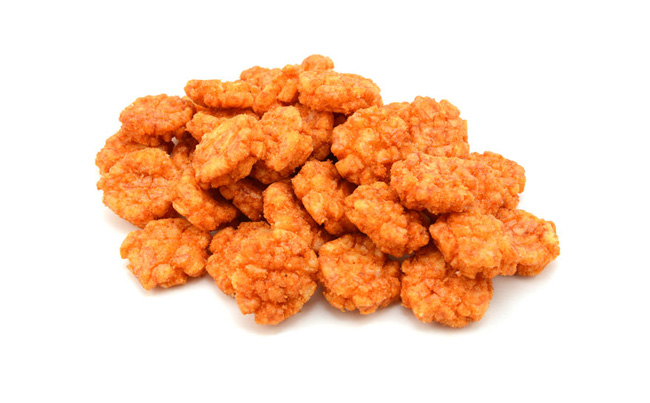
For fans of spicy foods, togarashi senbei is sure to be a favorite. After toasting, the rice crackers are coated thickly in red chili pepper powder and flakes. The flavor can be too spicy for many Japanese people.
Ika (Squid) Senbei

Ika senbei, also called “ika-sen”, are one of several varieties of seafood senbei. Ika-sen can be made a few different ways, such as mixing pieces of grilled squid together with a binding agent and baking them flat, or by baking a single piece of whole squid onto the surface of a rice cracker. Not only does ika senbei have a striking appearance, but it’s incredibly delicious - the perfect accompaniment for a cold beer!
Ebi (Shrimp) Senbei

Ebi senbei, or “ebi-sen”, are made by mixing finely minced shrimp into senbei dough before baking. The color of the shrimp adds bright threads of red and pink to the toasted rice cracker when cooked.
Kuromame (Black Soybean) Senbei
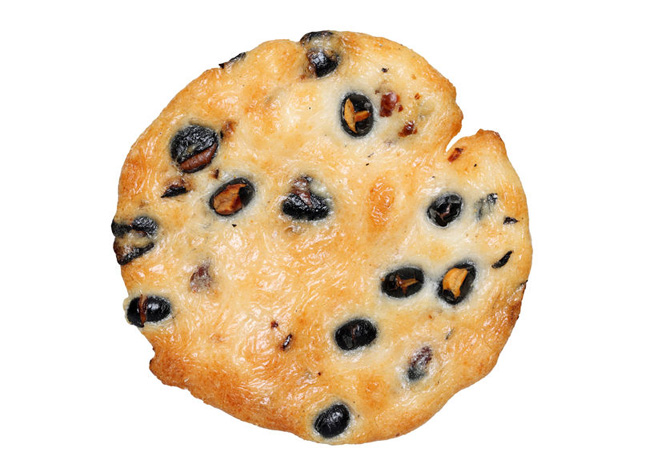
Kuromame senbei are made from a dough of flour and cooked black beans. The addition of beans make kuromame senbei a bit thicker and more filling than other kinds of rice crackers.
Zarame (Sugar) Senbei

Although Japan has many kinds of savory rice crackers, there are a number of sweet senbei crackers as well. Sugared senbei is made with zarame sugar, known for its large crystals.
Regional Varieties of Senbei
Nure-Senbei (Wet Senbei), Chiba

Nure-senbei is a type of rice cracker from Chiba prefecture, near Tokyo. This rice cracker gets its name, meaning “wet”, from the fact that it is dipped in soy sauce during cooking so that it becomes moist and chewy all the way to the center of the cracker. It’s a local specialty of the city of Chosi, which specializes in soy sauce production.
Mentaiko (Spicy Cod Roe) Senbei, Fukuoka

Mentaiko senbei, or “menbei”, comes from the Fukuoka area which is famous for its mentaiko, a type of spicy fish roe. These Japanese rice crackers are made by mixing mentaiko into the pounded rice mixture before toasting so the salty, spicy flavor of mentaiko is baked right in.
Kare (Curry) Senbei, Hokkaido

Curry senbei from Hokkaido is a type of rice cracker made in collaboration with a famous curry shop in Sapporo. Japanese curry tends to be a bit sweeter and milder in flavor than other types of curry, such as Indian or Thai curry, but the wonderful blend of spices and aromatics used go well with toasted rice crackers.
Other (Un-Cracker-Like) Senbei
Arare

Arare is another type of rice cracker that’s made like senbei from pounded rice that’s toasted over a flame, but which is much smaller in shape. These bite-sized crackers come in a variety of shapes, such as tiny stars and seed shapes, and they can be mixed with other ingredients such as wasabi peas and are a popular Japanese snack food.
Kawara Senbei

Kawara senbei are a type of sweet senbei that can be enjoyed with tea or coffee. Made with flour, sugar, and eggs, kawara senbei is more like a cookie wafer than a rice cracker. It gets its name, which means “tile” in Japanese, from the fact that the original kawara senbei crackers were made in the shape of roof tiles for homes and buildings. Today, kawara senbei is available in all different shapes and often come decorated with patterns or custom messages written in icing.
Hone (Fish Bone) Senbei

Known as “hone senbei”, these are a common bar snack offered in places like izakaya (Japanese gastropubs). They’re made by deep frying the spine bone of fish or eel left over once the fillets have been removed. The bones are fried until they become very crispy, and are then seasoned with salt or other seasonings. The fried fish bones are rich in umami flavor and go great with Japanese sake
Try Senbei for a Traditional Japanese Snack Food
There’s a wide variety of Japanese senbei available in all sorts of shapes, sizes, and flavors. The next time you’re in Japan, be on the lookout for the wonderfully aromatic rice crackers, especially freshly roasted senbei from an artisan rice cracker shop. The scent and flavor of a toasted senbei cracker hot off a grill is irresistible. Itadakimasu!


